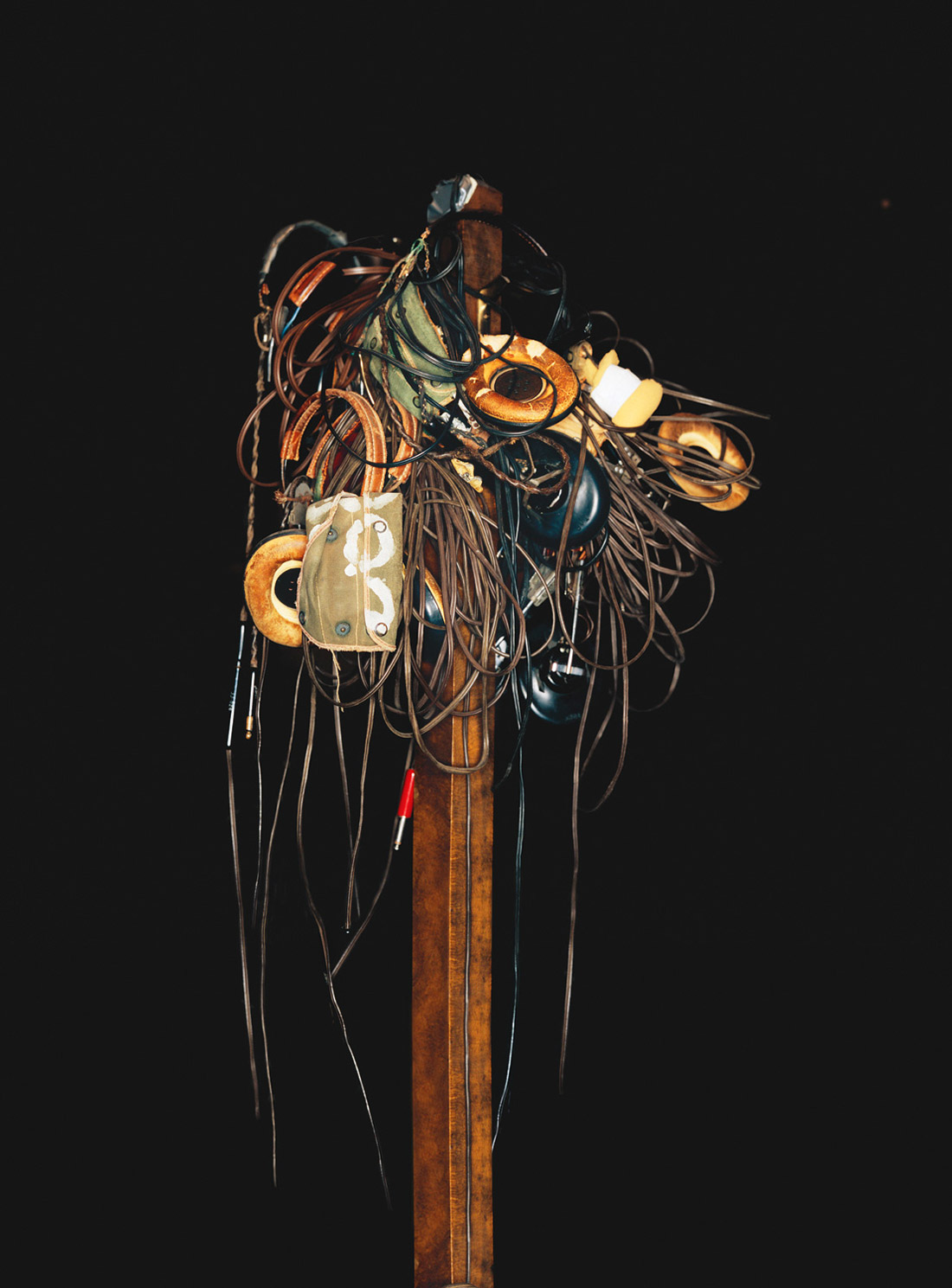The KSM line represents Shure’s premium recording microphones. The newest member is the KSM42, a fixed-cardioid side-address condenser mic. With a similar “giant almond” shape to the KSM44A, the KSM42 is a darker-bronze metallic and is tailored for vocals. The package we reviewed included a hard case; velveteen pouch; open-cage ShureLock rubber suspension mount; and one of the coolest-in-real-life-accessories, a magnetically-mounted low-profile Popper Stopper. The magnet is just strong enough to hold the filter to the body of the mic, helping to ensure the stopper is consistently placed while eliminating the clutter and extra set up of dedicated mounting hardware. After using this in a session, I wrote to Shure to demand a raise be given to the person who championed this accessory.
In terms of construction, the KSM42 is very solid feeling and contains many new design features. For more detail, please visit the company’s website. But two elements merit discussion. First is the Prethos Advanced Preamplifier. At first I thought this was simply a marketing tag, so I pressed Shure to explain. Basically, this technology is comprised of high performance components and a custom topology that provides low distortion, reduced noise, and consistent performance from microphone to microphone; and stringent manufacturing processes are employed during assembly to ensure the integrity of each component. Thanks, Shure, for that professional explanation. Now, let me translate into my interpretation. In the race to make the $1 vocal mic, Shure is drawing a line in the sand, starting with the use of only audio-quality components. Instead of jumping from one low-cost assembly plant to another (and abandoning workers after they’ve spent a year learning their craft), Shure uses humans who build mics for a living in Wheeling, Illinois. The Prethos electronics, mic capsules, and final product are built to a standard — not a quota. To be fair, most of the mics reviewed in Tape Op are constructed using similar standards, but that’s not the case across the market, and it should be noted.
The second item deals with diaphragm implementation. As noted, the KSM42 is a single-pattern, cardioid, condenser microphone. Almost every cardioid-only mic uses a single diaphragm. (Adding a second diaphragm is how multi-pattern mics came to be. Adjusting the phase and power of the back diaphragm changes the mic’s pick-up response.) However, the KSM42 has two diaphragms: the powered front and a passive back. The additional membrane reduces proximity effect and related low-frequency effects, which can be desirable in a vocal mic.
Pulling up the spec sheet, the response confirms the ruler-flat midrange. However, the test graph shows a slight rise starting at 3 kHz. Maybe I’m used to more-hyped mics, but I didn’t find the top end of the KSM42 to be overly bright. Of course, it’s not as dark as an old tube mic, either. I guess it’s simply more restrained in comparison to contemporary sizzlers sold at the mall guitar stores — you know, the mics that sound great and hyped in the store, but can’t give a usable recording in the studio. This is the opposite of that kind of mic.
Taking my friend’s call into consideration, I figured that someone on a budget for a vocal mic will want to know if a candidate can be used on other sources, too. So we tried the KSM42 on acoustic guitar and as a room mic for distorted electric guitar. On acoustic, it was less low-mid boom prone than other large-diaphragm condesors. I liked it over the player’s ear and paired with a single small-diaphragm condenser pointed at the twelfth fret. As a distance mic for electric guitar, we noticed that the KSM42 had a wider usable sweet spot while picking up less boxiness from the room. There was room tone, but less low mids and lows had to be scooped out. It exhibited the best characteristics of a cardioid and an omni in one mic. I would have liked to have tried a stereo pair, but the odds are good that people have a single KSM42 purchased for vocals. Most stereo work would likely go to its multi-patterned cousin KSM44A. In short, the mic’s neutrality and tendency for a flat mid response would make the KSM42 suitable in just about any area where a cardioid large-diaphragm condenser would be appropriate.
If you’re looking for a killer microphone that will capture vocals without changing the way they sound, then by all means consider a Shure KSM42/SG. The Shure KSM42/SG package offers great function and value. The Prethos preamplifier circuitry brings out vocal definition without adding low-mid murk or high-end sibilance. Both an internal and an included external pop filter keep breath noise and plosives at bay, and the mic’s consistent cardioid pattern as well as its proximity-effect-negating dual-diaphragm design give it an enormous sweet spot. Top it off with a full set of mounting hardware, an aluminum carrying case, and a velveteen storage pouch, and there’s no denying that the Shure KSM42/SG kit is a solid deal.
($799 street; www.shure.com)
–Garrett Haines, www.treelady.com
Microphones, Tools | No. 141
Element Microphone
by Ben Bernstein
At $199, the Aston Element is a very affordable mic, but by no means is it cheap gear. That is to say, the value at this price point is immeasurable. An expertly crafted microphone paired with a...




_disp_horizontal_bw.jpg)